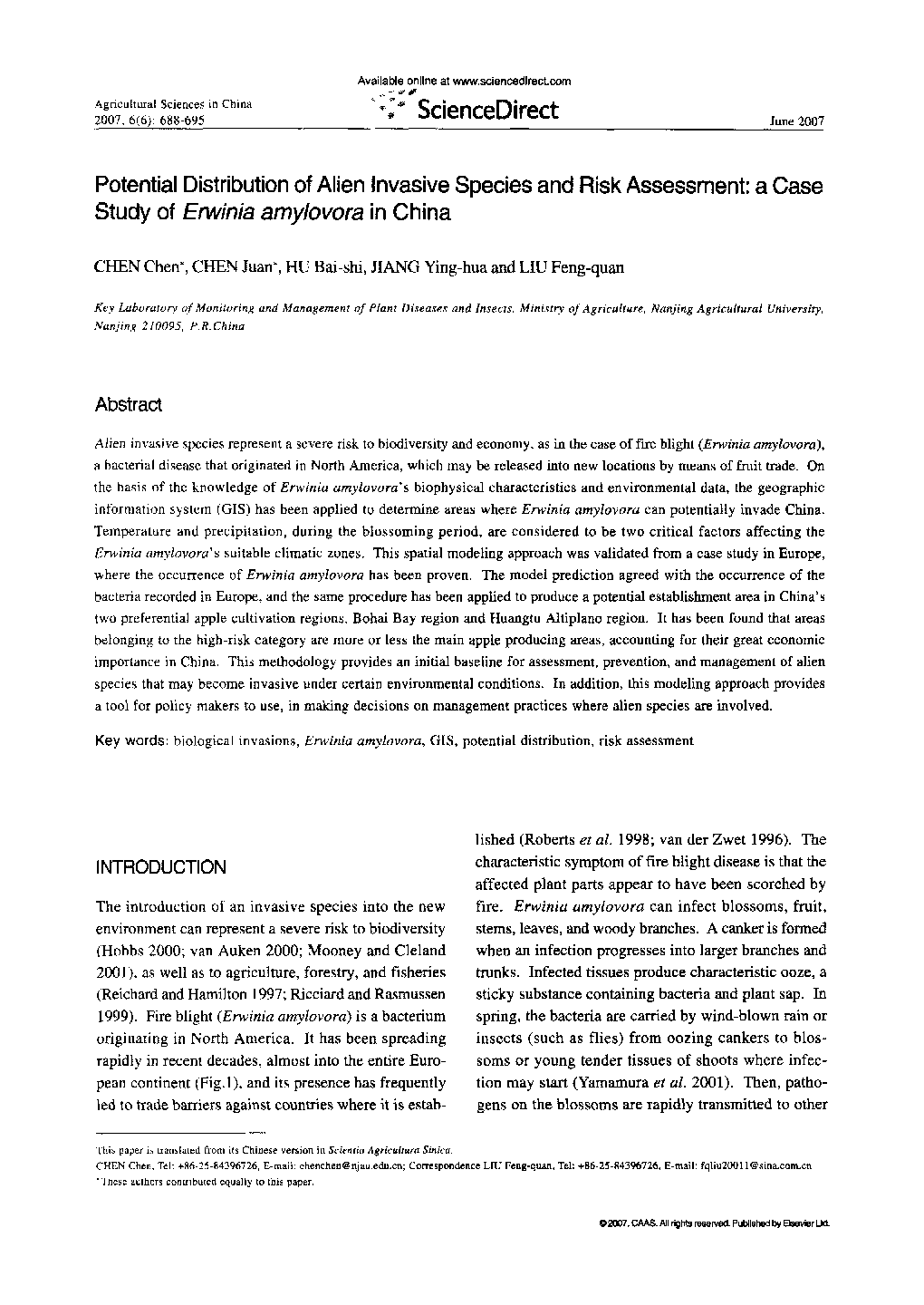| Article ID | Journal | Published Year | Pages | File Type |
|---|---|---|---|---|
| 4490860 | Agricultural Sciences in China | 2007 | 8 Pages |
Alien invasive species represent a severe risk to biodiversity and economy, as in the case of fire blight (Erwinia amylovora), a bacterial disease that originated in North America, which may be released into new locations by means of fruit trade. On the basis of the knowledge of Erwinia amylovora's biophysical characteristics and environmental data, the geographic information system (GIS) has been applied to determine areas where Erwinia amylovora can potentially invade China. Temperature and precipitation, during the blossoming period, are considered to be two critical factors affecting the Erwinia amylovora's suitable climatic zones. This spatial modeling approach was validated from a case study in Europe, where the occurrence of Erwinia amylovora has been proven. The model prediction agreed with the occurrence of the bacteria recorded in Europe, and the same procedure has been applied to produce a potential establishment area in China's two preferential apple cultivation regions, Bohai Bay region and Huangtu Altiplano region. It has been found that areas belonging to the high-risk category are more or less the main apple producing areas, accounting for their great economic importance in China. This methodology provides an initial baseline for assessment, prevention, and management of alien species that may become invasive under certain environmental conditions. In addition, this modeling approach provides a tool for policy makers to use, in making decisions on management practices where alien species are involved.
